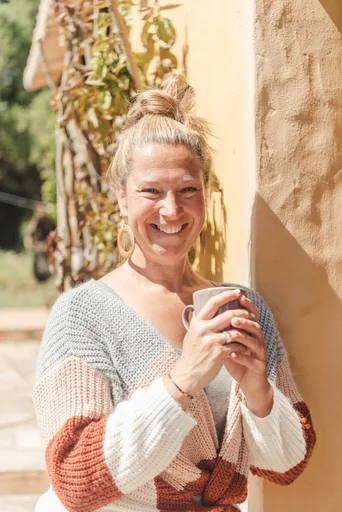Bow Pose: How to Practice Dhanurasana - Yoga Journal

Introduction to Dhanurasana
Dhanurasana, commonly known as the Bow Pose, is a fundamental yoga posture that offers a myriad of physical and mental benefits. This ancient asana involves the body taking the shape of a bow, with the hands holding the ankles and the chest lifted off the ground. The practice of Dhanurasana helps in strengthening the back and abdominal muscles, enhancing blood circulation, improving posture, managing diabetes, digestive ailments, chest ailments, and even enhancing skin appearance.
The symbolism behind the Bow Pose is deeply rooted in its name. Derived from Sanskrit words, "Dhanu" translates to bow, while "asana" refers to posture. This symbolic representation signifies balance in life, just like a bow - an equilibrium between strength and flexibility. The pose embodies a sense of harmony and poise, reflecting the need for both physical and emotional balance in one's life.
Dhanurasana also holds therapeutic effects such as stimulating organs in the neck and abdominal region, improving blood pressure, providing relief in menstrual discomfort, fatigue, respiratory ailments, and more. It straightens the back, thereby improving breathing processes and leading to free passage of air via nasal passages. This explains its positive effect on snoring and sleep apnea.
Roll your shoulders back to open up your chest cavity for better breathing during this pose.
Bow Pose Basics
Now that you have been introduced to the essence of Dhanurasana, it's essential to understand the foundational aspects and preparations required for practicing the Bow Pose. Before delving into the pose itself, it's crucial to engage in specific warm-up poses and comprehend your body's limits to ensure a safe and effective practice.
Preparing for Bow Pose
Warm-Up Poses
Prior to attempting Dhanurasana, incorporating warm-up poses is highly recommended. These preparatory poses help in loosening up the muscles and increasing blood circulation, which are vital for executing the Bow Pose effectively. Poses such as Cobra Pose (Bhujangasana) and Bridge Pose (Setu Bandhasana) can be particularly beneficial. The Cobra Pose aids in strengthening the spine and opening up the chest, while the Bridge Pose stretches the neck and back, preparing them for more intense backbends like Dhanurasana.
Understanding Your Body's Limits
It's imperative to recognize your body's limitations before engaging in any yoga practice. Each individual has unique physical abilities and restrictions, so it's essential to listen to your body and avoid pushing beyond its current capabilities. Respect your body's signals during warm-up poses and be mindful of any discomfort or pain. This awareness will guide you in gradually progressing towards mastering Dhanurasana without risking injury.
Bow Pose Basics: What You Need to Know
The Importance of Back Strength
The practice of Dhanurasana places significant emphasis on back strength. As you lift your chest off the ground while holding your ankles, it requires substantial engagement of the back muscles. Regular practice of this pose not only strengthens the back but also enhances spinal flexibility, contributing to better posture and overall spinal health.
The Role of Love in Dhanurasana
Incorporating an emotional perspective into yoga practices can deepen their impact on both physical and mental well-being. Dhanurasana is associated with activating and balancing the Heart Chakra (Anahata), which is linked with love, compassion, acceptance, and forgiveness. By consciously infusing feelings of self-love and compassion during this pose, practitioners can experience a profound sense of emotional balance and inner harmony.
Dhanurasana encourages individuals to embrace self-love while fostering an appreciation for their bodies' capabilities. This holistic approach aligns with yoga's philosophy of nurturing a harmonious connection between mind, body, and spirit.
Step-by-Step Guide to Practice Dhanurasana

Now that you have gained insight into the significance and symbolism of Dhanurasana, it's time to delve into the step-by-step process of practicing this invigorating Bow Pose. Follow these guidelines to ensure a safe and effective execution of the pose, allowing you to experience its myriad benefits.
Getting Into Bow Pose
Begin by lying flat on your stomach, with your feet hip-width apart and arms resting alongside your body.
As you exhale, bend your knees and bring them towards your buttocks.
Reach back with your hands to hold onto your ankles or feet, ensuring a firm grip.
Inhale deeply as you lift your chest off the ground, simultaneously raising your thighs away from the floor.
As you lift into the pose, imagine yourself as a bow, ready to release an arrow of energy and vitality.
Maintaining the Pose
Breathing Techniques
As you settle into Dhanurasana, focus on deep and rhythmic breathing. Inhale slowly and deeply through your nose, allowing your chest to expand fully. Feel the stretch across your abdomen and chest as you hold the pose. Exhale gently through your nose, maintaining a steady flow of breath throughout the duration of the pose.
Adjusting for Comfort and Stability
While in Bow Pose, pay attention to any discomfort or strain in specific areas such as the neck or lower back. If needed, make subtle adjustments to ensure comfort and stability without compromising the integrity of the pose. Engage your core muscles to support your lower back and maintain balance.
Exiting Bow Pose Safely
When concluding your practice of Dhanurasana, release your grip on your ankles or feet as you exhale slowly. Lower your chest and thighs back down to the ground gently, returning to a relaxed prone position. Take a moment to rest before transitioning into another yoga posture or concluding your practice.
Incorporating these steps into each session will help you master Dhanurasana while reaping its numerous physical and emotional benefits.
Bow Pose Variations and Counter Poses
Now that you have familiarized yourself with the foundational aspects of Dhanurasana, it's essential to explore variations of the Bow Pose and understand the significance of counter poses in maintaining a balanced yoga practice.
Half Bow Pose: A Gentle Variation
For individuals seeking a gentler approach to experiencing the benefits of Dhanurasana, the Half Bow Pose serves as an accessible variation. This modified version allows practitioners to focus on specific areas while still reaping the rewards of this invigorating pose.
The Half Bow Pose involves assuming a similar position to Dhanurasana but with a more targeted approach. While lying on your stomach, lift one leg at a time towards your buttocks, reaching back to hold onto the ankle or foot with one hand. This variation provides an opportunity to concentrate on strengthening and stretching one side of the body at a time, making it particularly beneficial for individuals with asymmetrical strength or flexibility.
Incorporating Half Bow Pose into your yoga practice can aid in addressing imbalances within the body while gradually building up towards mastering the full expression of Dhanurasana.
Counter Poses to Balance Your Practice
Why Counter Poses Matter
Integrating counter poses into your yoga routine is crucial for maintaining equilibrium within the body and preventing overuse or strain on specific muscle groups. As Dhanurasana primarily engages the back muscles, incorporating counter poses helps in restoring balance and promoting overall well-being. Counter poses serve as a means to alleviate any tension or fatigue resulting from intense backbends, ensuring that your practice remains harmonious and sustainable.
Recommended Counter Poses
Bridge Pose (Setu Bandha Sarvangasana): This gentle backbend offers an effective counterbalance to Dhanurasana by stretching and strengthening the spine while opening up the chest and shoulders. Bridge Pose also stimulates abdominal organs, enhancing digestion and alleviating discomfort associated with prolonged periods of sitting.
Camel Pose (Ustrasana): As a powerful heart opener, Camel Pose serves as an excellent counter pose for Dhanurasana. It stretches the front of the body while strengthening the back muscles, providing relief from any strain experienced during bow pose variations.
Locust Pose (Salabhasana): Engaging in Locust Pose helps in strengthening the muscles along the spine and toning the buttocks, offering a supportive counterbalance to backbends like Dhanurasana. This pose also aids in improving posture and relieving lower back pain.
By integrating these recommended counter poses into your yoga practice, you can ensure that your body experiences holistic care and maintains equilibrium amidst diverse movements and postures.
The Perks of Practicing Bow Pose
Physical Benefits of Bow Pose
Practicing Bow Pose offers a multitude of physical benefits that contribute to overall well-being and vitality.
Strengthening the Back and Abdomen
Engaging in Dhanurasana consistently strengthens the muscles in the back and abdomen, promoting spinal health and core stability. The dynamic action of lifting the chest and thighs off the ground activates these muscle groups, leading to improved posture and reduced risk of back-related discomfort. Additionally, the stretching involved in this pose helps alleviate tension in the back, fostering a sense of suppleness and strength.
Enhancing Flexibility and Posture
The elongation of the front body during Bow Pose enhances flexibility in the spine, shoulders, and hip flexors. This increased flexibility contributes to better posture by counteracting the effects of prolonged sitting or sedentary lifestyles. As practitioners gradually deepen their practice, they experience enhanced mobility and agility, allowing for greater ease in daily movements.
Mental and Emotional Benefits
In addition to its physical advantages, Dhanurasana holds significant mental and emotional benefits that contribute to holistic well-being.
Fostering Self-Love and Acceptance
The act of practicing Bow Pose encourages individuals to cultivate a sense of self-love and acceptance. By engaging with this pose regularly, practitioners develop a deeper connection with their bodies, fostering appreciation for their capabilities while embracing self-compassion. This emotional nurturing aligns with yoga's philosophy of holistic wellness, promoting a positive relationship with oneself.
Bow Pose Perks: Beyond the Physical
Beyond its physical and emotional benefits, Dhanurasana offers an opportunity for practitioners to tap into a profound sense of inner balance. The symbolism behind this pose as a representation of equilibrium mirrors its capacity to instill a harmonious state within individuals. By integrating breath awareness and intentional movement into this practice, individuals can experience a heightened sense of mindfulness and emotional equilibrium.
See Also
Exploring Brahmacharya Yoga: Asana, Chant, Gesture | Yamas & Niyamas
Yoga Poses for Beginners: A Helpful Q&A Session
Spring Equilibrium: A Yin Yoga Flow - Yoga Journal
Discovering Anjali Mudra (Salutation Seal) | Yoga Basics
The Path of Truth: Yoga Flow with Chant, Gesture, Meditation | Yamas & Niyamas
We bring back the importance of initiation into womanhood by Roos-Veerle Krijnen & Ella-June Henrard
Welcome to the Women’s Initiation Retreat by Naked Truth Retreats, a transformative journey into the depths of your True Feminine Nature. This retreat, scheduled from 17th to 24th August 2024 in Portugal, invites you to remember the sacredness and wholeness of your being.
Roos-Veerle Krijnen & Ella-June Henrard



